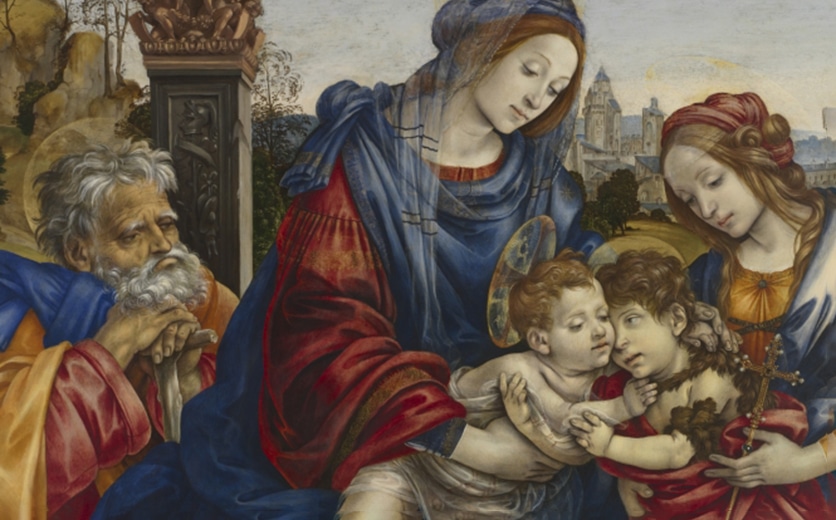The proclamation that Jesus was “conceived from the Holy Spirit” (Matt 1:20, Luke 1:35) raised questions for early Christ-followers about how to understand the relationship between Jesus and his “brothers and sisters” who were widely known by name.
What evidence exists for Jesus’s “brothers and sisters”?
The earliest written evidence for Jesus’s life mentions his “brothers and sisters”—a kinship group distinguished from his followers (see Josephus, Ant. 20.9.1; Gal 1:9; 1 Cor 9:5; etc.). In a story shared by both the Gospel of Mark and the Gospel of Matthew, a crowd rejects Jesus’s teaching in part because of how well they know Jesus’s family (Mark 6:1–6; Matt 13:54–58). Jesus is “the carpenter’s son”; his mother is Mary. The crowd knows four of Jesus’s brothers by name: James, Joses, Judas, and Simon in Mark; or James, Joseph, Simon, and Judas in Matthew. Moreover, they know that “his sisters” live among them.
The exact nature of these family relationships, however, is complicated by several factors. The words used to describe the relationship—“brother” and “sister” (in Greek, adelphos and adelphē)—often refer to biological siblings but also can refer to varying degrees of familial relations or even unrelated persons with close social connections. The names given for Jesus’s family members—Joseph/Joses, James, Judas, Simon—are common, which can make it difficult to differentiate the brothers from other individuals who share the same names. Finally, the biological identification of Jesus’s “brothers and sisters” has direct implications on major Christian teachings, including the incarnation of Jesus and the significance of his mother Mary.
How has the relationship between Jesus and his siblings been understood?
One early understanding of Jesus’s siblings is that they share the same biological father and mother as Jesus. Chapter 11 of The Acts of Thomas, a noncanonical text from the third-century CE, indicates that Jesus had an identical twin brother, Judas Thomas, which would require a shared biological origin.
Another view, which attempts to account for the virgin conception of Jesus, suggests that the “brothers and sisters” are born from Mary and Joseph’s marriage following the birth of Jesus. This tradition stems from statements such as Luke 2:7 (Jesus is Mary’s “firstborn”) and Matt 1:25 (Joseph “had no marital relations” with Mary “until she had borne a son”). This would make the siblings half-siblings with Jesus, sharing a biological mother (Mary) but not the same biological father.
Another tradition, from the second-century CE Protoevangelium of James, suggests that Joseph was a widower who had children prior to his betrothal to Mary. Though they shared no direct biological connection to Jesus, these children came to be called Jesus’s “brothers and sisters,” making them Jesus’s step-siblings.
One other tradition argues that Jesus’s “brothers and sisters” are more rightly identified as his cousins. Eusebius’s fourth-century Historia Ecclesiastica recounts that Simeon/Simon (and perhaps James) was the “son of our Lord’s uncle” (4.22.4).
Are Jesus’s “brothers and sisters” biological siblings? Half siblings? Step siblings? Cousins? While evidence indicates Jesus’s family was known and distinguished from his followers, enough ambiguity remains to make an exact identification uncertain.
Image Credit: Filippino Lippi, The Holy Family with Saint John the Baptist and Saint Margaret, ca. 1495, tempera and oil on wood, 184 x 186 x 9.5 cm (cropped). Courtesy The Cleveland Museum of Art.




